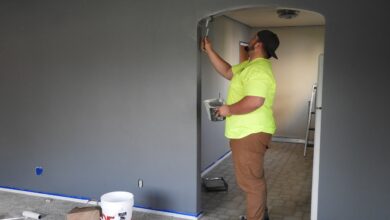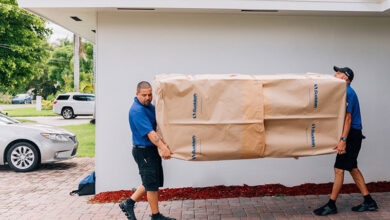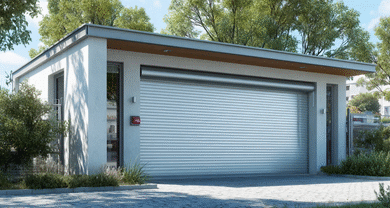Regal Ambiance: Styling Your Space with Victorian Plaster Coving

Imagine transforming your home into a place that feels like royalty lives there. It’s a classic design choice that adds elegance and style to any room.
One way to achieve this is by using something called Victorian plaster coving. Victorian plaster coving is a fancy decoration that you put on the walls near the ceiling. It has really detailed designs and looks very grand.
In this article, you will learn all about Victorian coving and its importance for interior design.
Understanding Victorian Plaster Coving
Victorian plaster coving is a type of decorative plaster molding installed where the walls meet the ceilings. It first appeared during the Victorian era, which lasted from the mid-19th century to the early 20th century and quickly became associated with luxurious interior design.
During the Victorian era, there was a strong influence from classical architectural styles and a focus on creating lavish and ornate spaces. These influences greatly impacted the design of plaster coving during that time.
Victorian plaster coving is known for its intricate patterns, often featuring floral motifs and displaying meticulous craftsmanship. Incorporating Victorian plaster coving into a room can instantly add a sense of grandeur and history.
Incorporating Victorian Plaster Coving in Your Space
To incorporate Victorian plaster coving into your space, assess the areas where coving installation would be appropriate. Common areas include living rooms, dining rooms, hallways, and bedrooms.
Consider the size of the room and the ceiling height to ensure that the coving is proportionate and visually appealing. When choosing a design and style of Victorian plaster coving, take inspiration from the era, with options ranging from simple curves to more elaborate patterns.
Installation Process of Victorian Plaster Coving
When it comes to installing Victorian plaster coving, you have two choices: hiring a professional or taking on the project yourself. If you decide to go the do-it-yourself (DIY) route, there are a few tools and materials you’ll need to gather beforehand.
That includes coving adhesive, a coving mitre box, a saw, and sandpaper. Here is a step-by-step manual to assist you with the entire process:
1. Measure and Cut
Begin by measuring the length of the walls where you plan to install the coving. Using a coving mitre box and a saw, carefully cut the coving to fit the corners. Take your time to ensure accurate measurements and clean cuts.
2. Prepare the Surface
Before applying the coving, make sure the wall and ceiling surfaces are clean and dry. Smooth any rough edges or imperfections with sandpaper, creating a clean and even surface for the adhesive to adhere to.
3. Apply Adhesive
Using a coving adhesive recommended by the manufacturer, carefully apply the adhesive to the back of the coving. Be sure to follow the instructions provided with the adhesive to achieve the best results.
4. Fix in Place
Carefully position the coving in place, ensuring it aligns properly with the walls and ceiling. Press it firmly against the surface, making sure it adheres securely.
5. Finishing Touches
Once the coving is firmly fixed, wipe away any excess adhesive with a damp cloth. Give the adhesive enough time to dry and set in accordance with the manufacturer’s recommendations.
Remember, working with Victorian plaster coving requires precision and attention to detail. Take your time and follow the steps carefully to achieve a professional-looking installation. If you encounter any difficulties or feel unsure, it’s always wise to seek guidance from a professional.
Enhancing the Regal Ambiance with Victorian Plaster Coving
To maximize the regal ambiance of Victorian plaster coving, consider pairing it with other architectural elements such as ceiling roses and cornices. These elements work together to create a cohesive and luxurious look.
Lighting also plays a crucial role in highlighting the coving and creating a dramatic effect. Use strategic lighting fixtures to cast shadows and accentuate the intricate details of the coving.
Additionally, choose complementary colors and patterns for your walls and coving to ensure a harmonious and visually appealing result.
Maintaining and Caring for Victorian Plaster Coving
To preserve the appearance of Victorian plaster coving, regular cleaning and dusting are essential. Use a soft brush or a dry cloth to remove dust and debris, taking care not to apply excessive pressure. In case of minor damages or cracks, you can repair them using plaster filler and sandpaper.
For long-term maintenance, it’s important to address any underlying issues, such as water leaks or structural problems, to prevent further damage to the coving.
References:
https://www.plasterceilingroses.com/pages/installation-guides-how-to-install-plaster-coving



